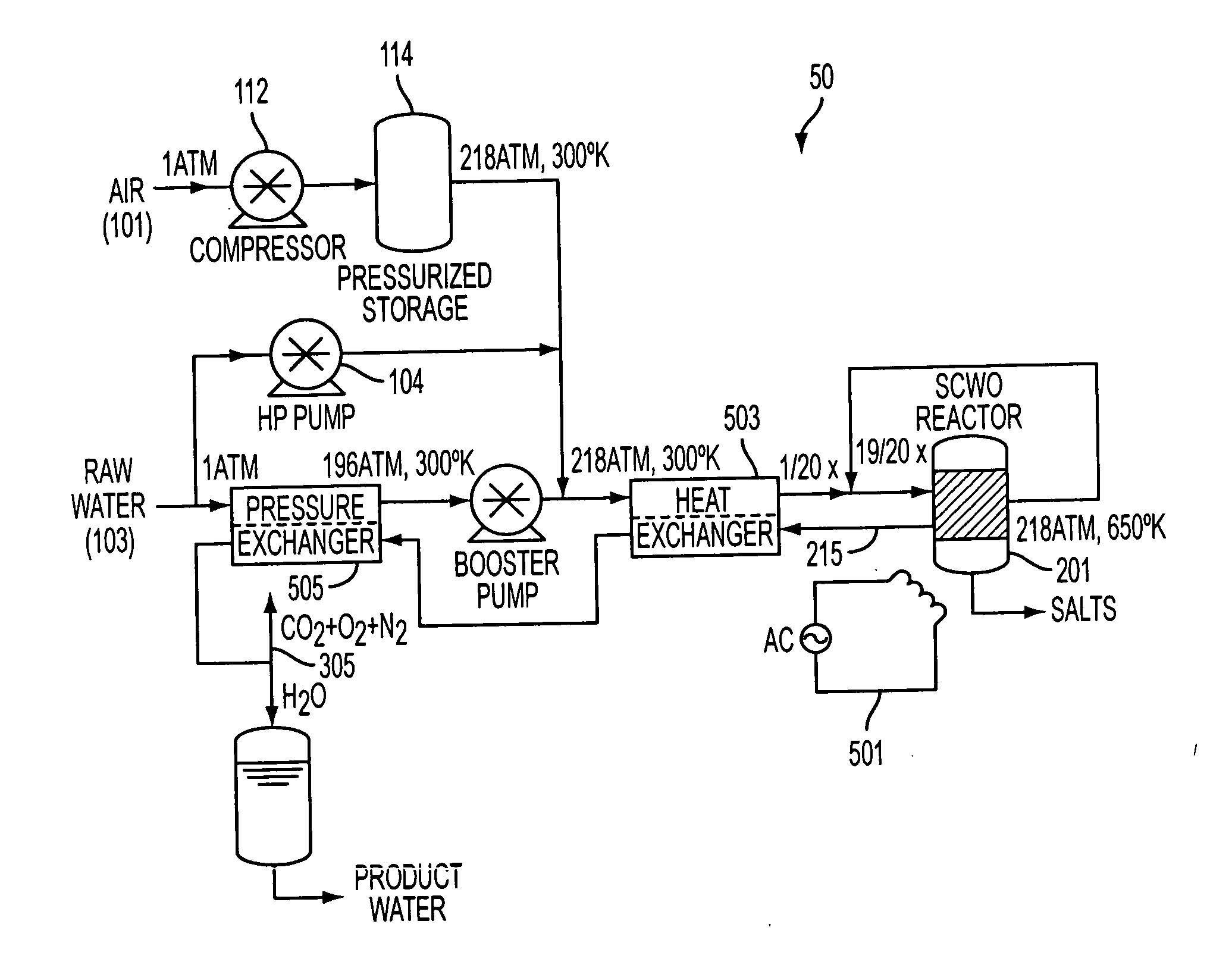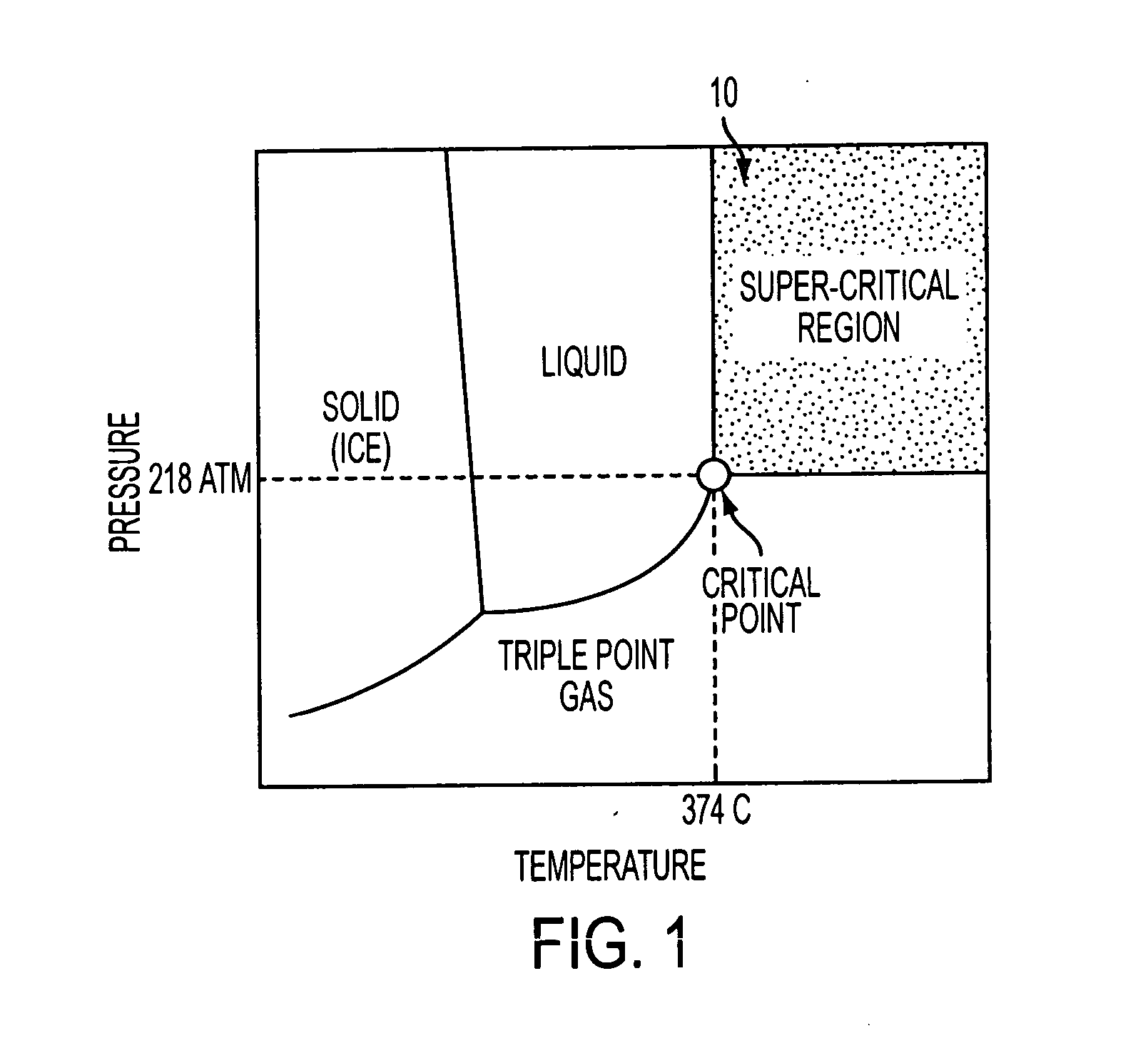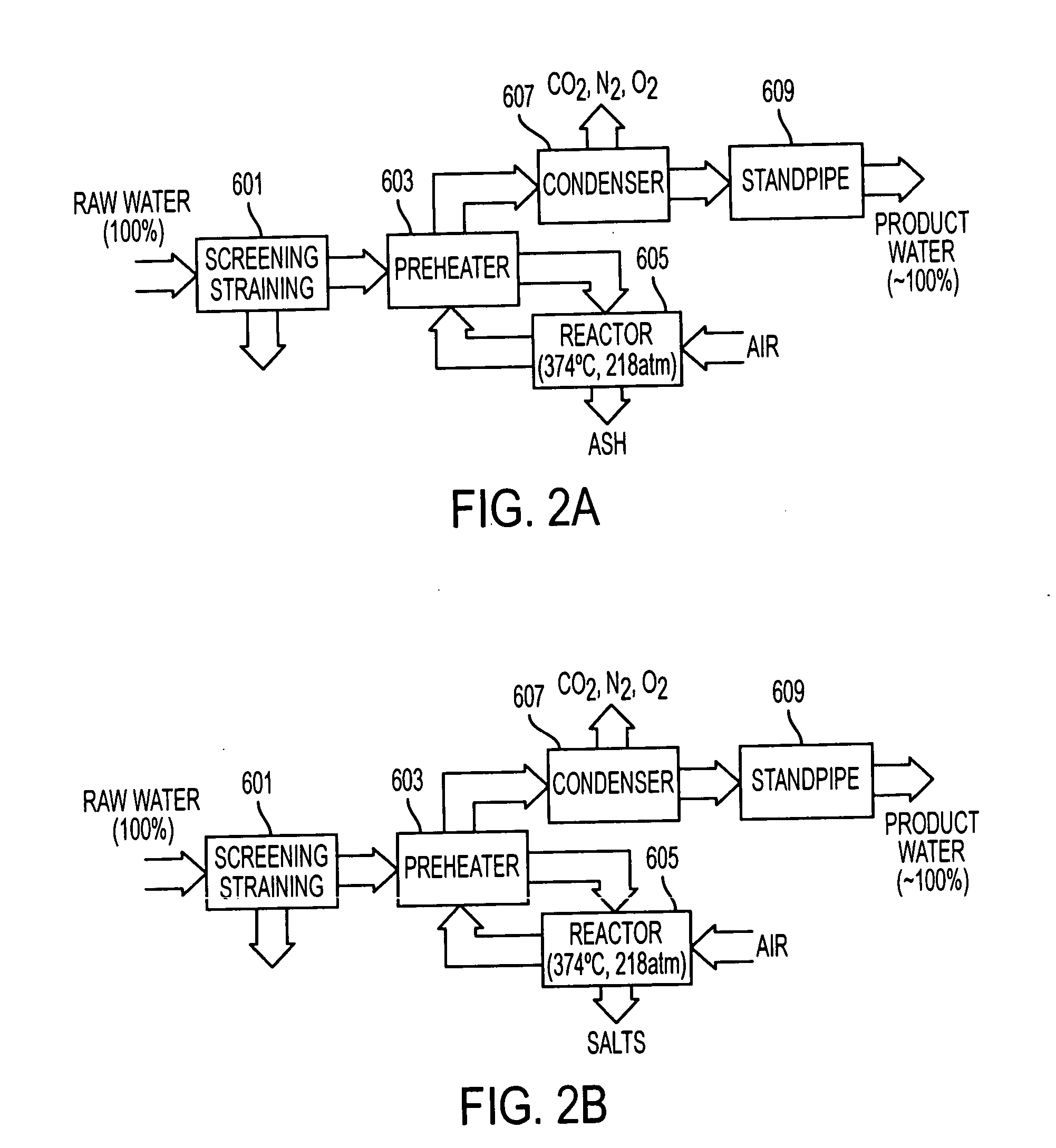Systems and methods for water purification through supercritical oxidation
a technology of supercritical oxidation and water purification, which is applied in the direction of sludge treatment by oxidation, separation process, treatment water, etc., can solve the problems of not being able to meet the needs of large-scale water treatment, the availability of environmental water is regularly insufficient, and the provision of clean drinking water is a problem. , to achieve the effect of reducing power requirements and high-speed water purification
- Summary
- Abstract
- Description
- Claims
- Application Information
AI Technical Summary
Benefits of technology
Problems solved by technology
Method used
Image
Examples
Embodiment Construction
)
[0033] Disclosed herein, among other things, is a supercritical water oxidation (SCWO) system for converting raw water which may or may not contain any kind of contaminant, whether or not harmful to human beings or whether or not present in sufficient quantities to harm human beings, into potable water. The raw water may be supplied from any source of water. Generally, the source will be at least partially wastewater supplies from prior human use of potable water (e.g. liquid sewage, used shower runoff, used laundry water or similar waters). In an alternative embodiment, the water may be partially or fully from environmentally based water sources for fresh water where potability will generally be undetermined or insufficient (e.g. lakes, rivers, underground wells, rain water or the like). In a still further embodiment environmental based sources of salt water (e.g. seawater) or brackish water, may provide some or all of the raw water. This water may be potable but for the salt cont...
PUM
| Property | Measurement | Unit |
|---|---|---|
| critical temperature | aaaaa | aaaaa |
| organic | aaaaa | aaaaa |
| pressure | aaaaa | aaaaa |
Abstract
Description
Claims
Application Information
 Login to View More
Login to View More - R&D
- Intellectual Property
- Life Sciences
- Materials
- Tech Scout
- Unparalleled Data Quality
- Higher Quality Content
- 60% Fewer Hallucinations
Browse by: Latest US Patents, China's latest patents, Technical Efficacy Thesaurus, Application Domain, Technology Topic, Popular Technical Reports.
© 2025 PatSnap. All rights reserved.Legal|Privacy policy|Modern Slavery Act Transparency Statement|Sitemap|About US| Contact US: help@patsnap.com



